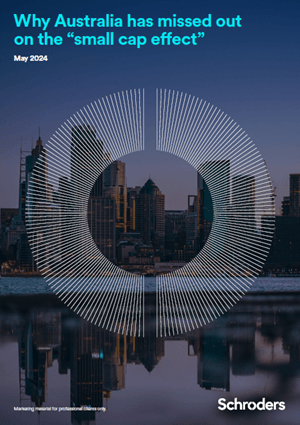Introduction
The idea that smaller companies offer higher risk-adjusted returns than larger companies, a claimed phenomenon known as the “small cap effect,” continues to live rent-free in the collective mind of Australian investors.
The size effect was first coined in Rolf W. Banz’s seminal 1981 paper “The relationship between return and market value of common stocks.” 1 Banz asserted that smaller firms, which he defined as the smallest 20% of the universe by market capitalisation, have higher risk adjusted returns, on average, than larger firms. Banz also found little difference in returns between medium sized and large sized firms.
But, for an investor, is the concept all it’s cracked up to be? Namely, does Banz’s concept of the small cap effect hold water in the Australian market?
There are currently 2,400 firms listed in the ASX. If an index was to be created on the ASX using Banz’s definition of a small firm, the largest constituent would be roughly A$8m in market capitalisation. In contrast, the smallest company in the ASX small ordinaries index currently is $200m in market capitalisation; and some of the largest constituents are larger than A$10b in market capitalisation. Perhaps unsurprisingly, the experience of an in investor in the ASX small ordinaries index has persistently bore no resemblance to the stellar returns depicted by Banz.
While many investors in Australia take a decision to structurally overweight small cap stocks given the sector and stock concentration in the large cap index, our analysis suggests that a separate allocation to small caps isn’t necessarily the best or most cost effective way to achieve this.
This paper will make the case that the performance, risk and constituent characteristics of the small cap index in Australia are poor; that the small cap designation is itself a misnomer (at least as it pertains to Australia); and the consequent benefit of investing in an unconstrained fund that can play the entire ASX.
Download the full paper
